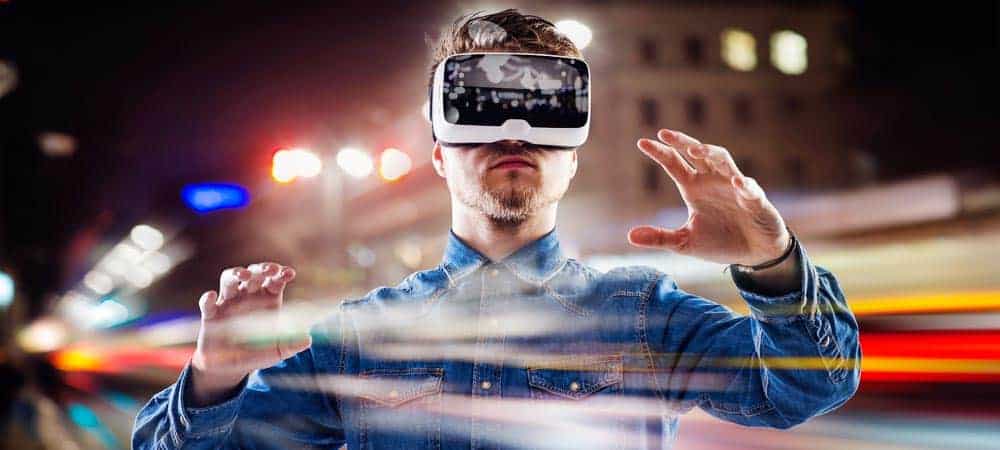Deep Retail - New Technologies Revolutionize Retail


Data is the new oil - this credo has long dominated all discussions about technological innovations based on the efficient analysis of data.
Data is the lubricant that makes the relationship between retailers and customers run smoothly. Not just today. Even in the past, retailers used information to strengthen customer loyalty.
Service, service, service
Innkeepers knew the favorite drinks of their regulars. Hoteliers knew which rooms their most loyal customers preferred. Such service gives customers a comforting feeling of being understood.
When consumers realize that retailers know their needs and can accurately anticipate their wishes, they inevitably feel well looked after - and are much more willing to dig deeper into their wallets.
Leveraging information about customers: The foundation for a highly individualized customer experience is data. Thanks to e-commerce and mobile commerce, there is more data than ever before.
Provided that users have consented to this, online retailers can collect a wide range of relevant data during each customer visit:
What gender is the customer? How old is he? Is he a new or existing customer? What is his geo-IP? Which device does he use to access the store? Which website does he use to access the store? Which pages and categories are of particular interest to him? What is the value of the shopping cart?
This information flows into the respective customer history and forms the optimal basis for addressing each individual customer in a personalized manner, for example with personal offers and recommendations that are perfectly tailored to their wishes and ideas.
Next level: personalization
Driven by the high maturity of many technologies, a decisive step in the evolution of personalization is imminent. In combination, technologies such as Big Data, artificial intelligence (AI) in general and machine learning in particular, facial recognition and eye tracking, enable personal data to be generated, analyzed and used in an entirely new and very powerful way.
This approach, known as deep retail, offers retailers very promising personalization opportunities.
With every activity, users leave their mark on the web. They gather information, make purchases, and rate products and services on rating platforms, social media, online stores, and blogs.
The amount of usable data is growing by the minute. That's why retailers are well advised to take advantage of the existing treasure trove of data by building up their own databases.
In doing so, they can decide which information they need from which sources according to their needs: Posts from social media, marketing surveys, or even customer service inquiries.
All service activities
When a new customer registers in an online store, he enters a range of relevant data in a form. In a C/4 Hana environment, this data is stored in the SAP Customer Data Cloud.
If the customer later logs into the store via his social media login, social media profiles and inventory data can be linked, provided the user has consented.
In an SAP C/4 environment, all his posts, likes, and comments are then stored and analyzed in the SAP Customer Data Cloud. This creates a meaningful profile of the respective customer.
Consent management, the management of consent for the use of customer-related data, can also take place in the Customer Data Cloud. The tool is also a valuable support for service.
When customers send a request to customer service, the corresponding e-mail is automatically forwarded to SAP Service Cloud, categorized, stored in the worklist of the respective service team and - ideally - even processed completely automatically. This makes SAP Service Cloud the central point of contact for all service activities.
Artificial intelligence
This creates vast amounts of data that need to be analyzed and used profitably. This is exactly what artificial intelligence methods make possible.
In its 2017 study, "Artificial Intelligence Set to Transform Digital Commerce Marketing," consultancy Gartner predicted that by 2020, AI-based technologies will account for as much as 30 percent of global digital commerce revenue growth.
With regard to stationary retail in Germany, PwC concluded in its study "Artificial Intelligence in Retail 2018" that 44 percent of Germans expect more attractive shopping experiences through the use of AI.
With this in mind, SAP offers Leonardo, an AI-based platform that uses machine learning and neural networks to help retailers quickly derive precise insights from Big Data and optimize business processes accordingly. Machine learning enables systems to learn from experience and continuously improve.

The AI generates the required knowledge from unstructured data, such as comments and e-mails, completely automatically. In the process, it looks for recurring patterns that allow it to make computer-based predictions - with the goal of computers learning without human intervention or assistance, thus creating the basis for better decisions.
For example, a machine learning system can analyze social media posts and recognize whether a customer is in the mood for a vacation and would like to fly to New Zealand. As a result, they are automatically presented with suitable products the next time they visit the store.
In addition, retailers can use anomaly detection to determine whether deviations are occurring. Is a product suddenly selling particularly well in a certain region or target group? By analyzing these processes, they can develop suitable actions to further fuel the trend and/or expand into other regions and target groups.
Sentiment analysis captures the mood
Evaluating user-generated content offers a further advantage: from the moods and opinions of users, retailers can derive valuable insights with regard to those products and services that their customers rate as good or less good - and further develop their offering in a targeted manner.
For this purpose, the solution checks whether a statement is to be classified as positive or negative. This enables retailers to design suitable offers or measures.
In an SAP environment, sentiment analysis is connected to SAP Cloud Platform and integrated with SAP Marketing Cloud and SAP Service Cloud.
There are also other ways to generate personal data. For example, many smartphones have technologies for facial recognition. Up to now, this technology has been used in particular to unlock the respective device.
Face recognition & eye tracking
But it makes sense to use the advantages of this function in other ways as well. For example, iPhone users can already authenticate themselves for Apple Pay via Face ID.
In the future, it will also be possible to capture users' current mood via the facial recognition function and provide them with appropriate shopping offers.
Accordingly, retailers are showing great interest in facial recognition technology - for example, as a basis for optimizing the customer experience. Walmart, for example, has applied for a patent for a technology that recognizes the emotional state of shoppers when they are shopping in a stationary store.
Retailers also see great potential in eye tracking. While the technology was previously only available on special screens, for example in the gaming sector or for usability tests, there are now devices that can be mounted on normal screens and thus enable professional eye tracking.
In the course of augmented reality, eye tracking has established itself as a component of various apps, using the selfie camera of the smartphone.
If merchants know which areas and thus offers their store visitors look at particularly intensively, the system can personalize the further customer experience by recommending suitable products, for example.
When implementing such processes, it is crucial to take existing user data privacy concerns seriously. The data protection scandals of recent times have finally led to a noticeable increase in awareness.
Both customers and retailers are caught between the desire for highly personalized shopping experiences and the legitimate interest in protecting personal data.
Privacy
That's why retailers who are looking into the possibilities of deep retail should internalize that absolute transparency must be ensured with regard to the use of customer data. They must be transparent about what data they collect and for what purpose, and how they store and protect it.
The European General Data Protection Regulation (GDPR) provides the relevant framework here. It offers retailers the opportunity to increase the trust of their customers by handling their data in a serious manner. Not least, this strengthens customer loyalty.
Smart retailers know their customers better than they know themselves. It's no longer a matter of asking consumers what they want, but of identifying their deepest desires early on - and fulfilling them.
In this way, sales can be increased in the short term, while retailers benefit in the long term from sustainably strengthened customer loyalty.








